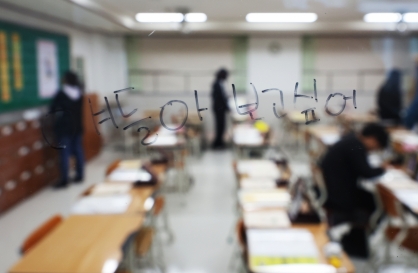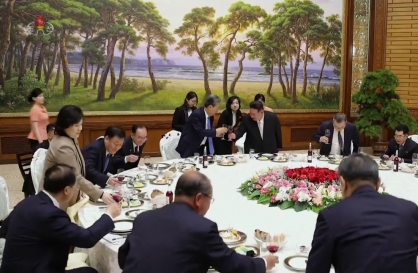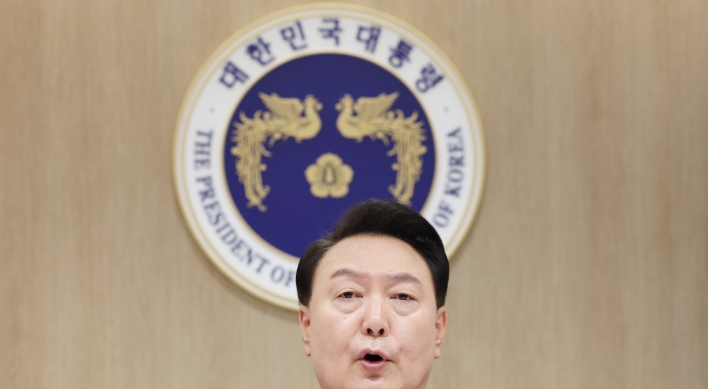The human population, now approaching 7 billion, may top 10 billion by 2100. Agronomists predict food shortages in our future, and it doesn’t take an advanced degree to understand why: When food production fails to keep pace with population growth, billions go hungry, including many Americans. To avert disaster, we must find a way to squeeze more grains, fruits and vegetables from ever less farmland.
While I am an environmentalist, I am convinced that transgenic crops should be part of the solution. However, unless we can improve their development and distribution, we will fail to realize their potential.
Whether you’re comfortable with the concept of genetically modified plants ― or GM crops, as they are sometimes called ― they already account for a significant share of worldwide agriculture. More than 2.5 billion acres have been planted with genetically modified seeds, by more than 15 million farmers in 29 countries. The economic impact is enormous, with the market value of biotech crops estimated at $11.2 billion last year. Most of us consume GM plants every day in familiar foods and beverages such as Ragu Pasta Sauce and Coca-Cola. Over the coming decades, the world will increasingly need to rely on them.
Most transgenic plants are designed to be herbicide- and pest-resistant. But they can also be engineered to grow without fertilizer, which saves not only on expensive fertilizers but also on the gasoline it takes to distribute them. Crops can be designed to survive on very little water ― a valuable asset given that climate change is expected to expand the world’s arid regions.
Scientists continue to create new varieties with ever more useful traits that make crops disease resistant and improve yield. But genetic modification promises even greater benefits to humanity.
Consider golden rice. Many of the world’s poorest people depend on rice as a significant source of food, but it doesn’t provide the complete nutrition that the human body requires. More than 250,000 children die every year due to vitamin A deficiency, and more suffer from associated ailments such as blindness. Golden rice has been engineered to contain beta carotene, which is a precursor of vitamin A.
Making it available in developing countries would save thousands of lives, and it would be more cost-effective than providing vitamin supplements or fortifying foods. Golden rice is expected to become available by 2013 in the Philippines and 2015 in Bangladesh.
Unfortunately, this example is the exception. Transgenic agriculture has mostly been limited to big crops that grow year round, such as corn and soybeans. These GM plants are made available exclusively by the multinational companies that have the money and legal clout to gain approval for their products. Such companies focus on market value and consumer acceptance, rather than on such humanitarian goals as supplying vitamin-rich foods to the poor.
The success of golden rice has been largely due to a collaborative push by public and private organizations. Initially, it was developed by researchers at the Swiss Federal Institute of Technology and the University of Freiburg in Germany. Then, the Swiss agribusiness giant Syngenta AG ensured that small farmers in developing countries would be able to buy the seeds at an affordable price. Today the International Rice Research Institute, in the Philippines, oversees the project, and a grant from the Gates Foundation finances food safety tests and covers the high costs of getting regulatory approval.
Can this model be replicated? Over the past few years, the U.S. Department of Energy’s Joint Genome Institute has taken up the challenge to sequence additional starches that could make a significant difference in developing nations where corn and soybean are less important than such staples as foxtail millet, sorghum and cassava. Such crops, if engineered to be more nutritious, as well as cheaper to grow in large quantities, could combat hunger in the poorest parts of Africa and Asia.
Golden rice proves the work can be successful, but also teaches us that it will take a large and coordinated effort to design these important foods for those who need them most.
By Sheril Kirshenbaum
Sheril Kirshenbaum is a Bloomberg View columnist. She is a research scientist at the University of Texas Center for International Energy and Environmental Policy and is the author of “The Science of Kissing: What Our Lips Are Telling Us.” The opinions expressed are her own. ― Ed.
While I am an environmentalist, I am convinced that transgenic crops should be part of the solution. However, unless we can improve their development and distribution, we will fail to realize their potential.
Whether you’re comfortable with the concept of genetically modified plants ― or GM crops, as they are sometimes called ― they already account for a significant share of worldwide agriculture. More than 2.5 billion acres have been planted with genetically modified seeds, by more than 15 million farmers in 29 countries. The economic impact is enormous, with the market value of biotech crops estimated at $11.2 billion last year. Most of us consume GM plants every day in familiar foods and beverages such as Ragu Pasta Sauce and Coca-Cola. Over the coming decades, the world will increasingly need to rely on them.
Most transgenic plants are designed to be herbicide- and pest-resistant. But they can also be engineered to grow without fertilizer, which saves not only on expensive fertilizers but also on the gasoline it takes to distribute them. Crops can be designed to survive on very little water ― a valuable asset given that climate change is expected to expand the world’s arid regions.
Scientists continue to create new varieties with ever more useful traits that make crops disease resistant and improve yield. But genetic modification promises even greater benefits to humanity.
Consider golden rice. Many of the world’s poorest people depend on rice as a significant source of food, but it doesn’t provide the complete nutrition that the human body requires. More than 250,000 children die every year due to vitamin A deficiency, and more suffer from associated ailments such as blindness. Golden rice has been engineered to contain beta carotene, which is a precursor of vitamin A.
Making it available in developing countries would save thousands of lives, and it would be more cost-effective than providing vitamin supplements or fortifying foods. Golden rice is expected to become available by 2013 in the Philippines and 2015 in Bangladesh.
Unfortunately, this example is the exception. Transgenic agriculture has mostly been limited to big crops that grow year round, such as corn and soybeans. These GM plants are made available exclusively by the multinational companies that have the money and legal clout to gain approval for their products. Such companies focus on market value and consumer acceptance, rather than on such humanitarian goals as supplying vitamin-rich foods to the poor.
The success of golden rice has been largely due to a collaborative push by public and private organizations. Initially, it was developed by researchers at the Swiss Federal Institute of Technology and the University of Freiburg in Germany. Then, the Swiss agribusiness giant Syngenta AG ensured that small farmers in developing countries would be able to buy the seeds at an affordable price. Today the International Rice Research Institute, in the Philippines, oversees the project, and a grant from the Gates Foundation finances food safety tests and covers the high costs of getting regulatory approval.
Can this model be replicated? Over the past few years, the U.S. Department of Energy’s Joint Genome Institute has taken up the challenge to sequence additional starches that could make a significant difference in developing nations where corn and soybean are less important than such staples as foxtail millet, sorghum and cassava. Such crops, if engineered to be more nutritious, as well as cheaper to grow in large quantities, could combat hunger in the poorest parts of Africa and Asia.
Golden rice proves the work can be successful, but also teaches us that it will take a large and coordinated effort to design these important foods for those who need them most.
By Sheril Kirshenbaum
Sheril Kirshenbaum is a Bloomberg View columnist. She is a research scientist at the University of Texas Center for International Energy and Environmental Policy and is the author of “The Science of Kissing: What Our Lips Are Telling Us.” The opinions expressed are her own. ― Ed.


















